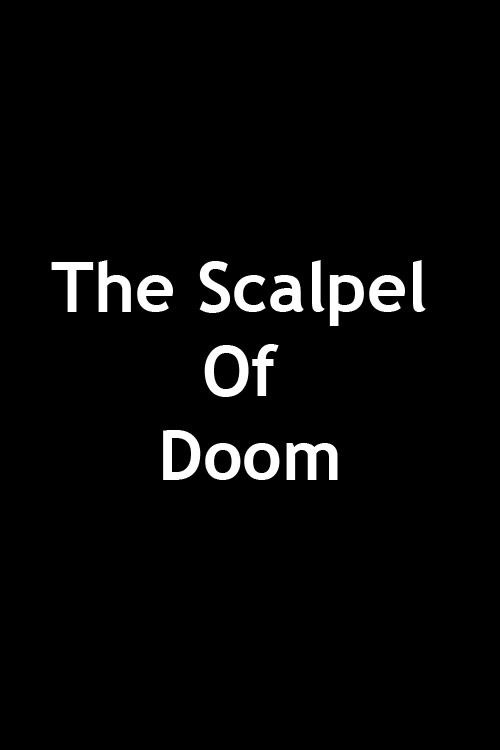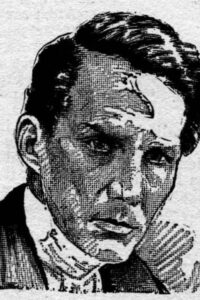
The Scalpel of Doom
I LET it go and followed her as she plunged deeper into the woods. We had only gone a hundred yards or so from where we left the car until I saw that a little tumbledown shack was ahead of us. Once it may have stood in a small clearing, but the thickets and underbrush were close around it now—a small, deserted, practically uninhabitable building with half its roof gone. We were almost on it before I could see a faint gleam of yellow glow through one of its broken windows which was blocked on the inside with newspapers.
“Come in, doc.”
The broken door creaked as she pulled at it. Instantly from inside came a voice. “Who’s there? Keep out of here! I warn you, I got a gun!” It was a weak, shaky voice with a frenzy of desperation in it.
“It’s me, Tom,” the girl said softly. “It’s all right, I’ve brought the doc.”
The boy lay on an old blanket on the bare wooden floor of an empty room. He was dressed in trousers and a shirt, a shirt with one shoulder torn and a crude, bloody bandage there. Beside him, there was an empty, broken wooden box, with a lighted candle, a pitcher, and a glass of water. Nearby, another blanket was spread. On the floor, in a corner, there were a few articles of food, tinned goods, and a loaf of bread.
“Oh, hello, doc, I guess I’m glad Jenny got you.” He was a slim, masculine version of the girl—a good-looking boy, with black hair clipped close to his head.
His face was pale and drawn; his lips bloodless. His dark eyes, fixed on me as I knelt on the blanket beside him, were glistening with fever.
“I’m all right, doc.” He tried to smile. “I cut myself. Just an accident, doc.”
He was far from all right. He had been stabbed in the shoulder, just missing the lung. He’d lost a lot of blood; but for a healthy young fellow, it didn’t seem a dangerous wound, if infection was kept out of it.
Read or download Book
Raymond King Cummings
Ray Cummings (born Raymond King Cummings) (August 30, 1887 – January 23, 1957) was an American author of science fiction literature and comic books. Cummings was born in New York City in 1887. He worked with Thomas Edison as a personal assistant and technical writer from 1914 to 1919.
Literary career
Cummings is identified as one of the “founding fathers” of the science fiction genre. His most highly regarded fictional work was the novel The Girl in the Golden Atom published in 1922, which was a consolidation of a short story by the same name published in 1919 (where Cummings combined the idea of Fitz James O’Brien’s The Diamond Lens with H. G. Wells’s The Time Machine) and a sequel, The People of the Golden Atom, published in 1920.
Before taking book form, several of Cummings’s stories appeared serialized in pulp magazines. The first eight chapters of his The Girl in the Golden Atom appeared in All-Story Magazine on March 15, 1919.
Later work
During the 1940s, with his literary career in eclipse, Cummings anonymously scripted comic book stories for Timely Comics, the predecessor to Marvel Comics. He recycled the plot of The Girl in the Golden Atom for a two-part Captain America tale, Princess of the Atom (Captain America Comics #25 & 26). He also contributed stories to the Human Torch and Sub-Mariner, which his daughter Betty Cummings often penned. Cummings died on January 22, 1957, at Mount Vernon, New York, of a cerebral hemorrhage.
Ray Cummings wrote in “The Girl in the Golden Atom”: “Time . . . is what keeps everything from happening at once”, a sentence repeated by scientists such as C. J. Overbeck, and John Archibald Wheeler, and often misattributed to the likes of Einstein or Feynman. Cummings repeated this sentence in several of his novellas. Sources focus on his earlier work, The Time Professor, published in 1921, as its earliest documented usage.






